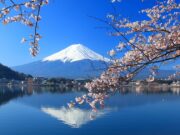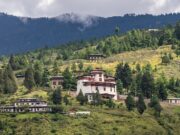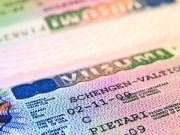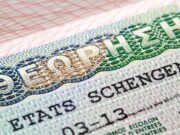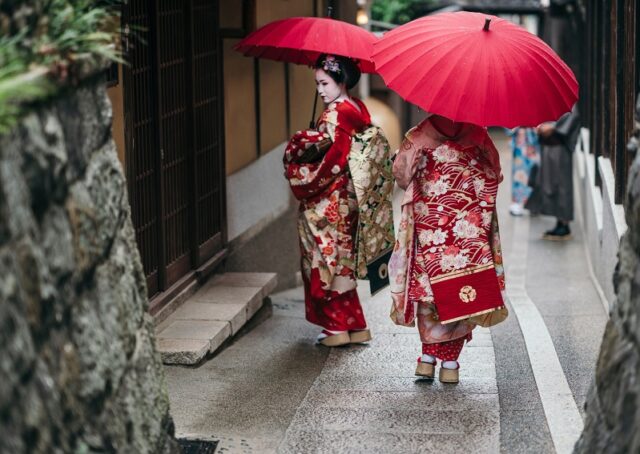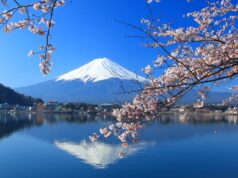Visitors to the geisha district of Gion – one of Kyoto’s most popular sightseeing spots – will be banned from entering its picturesque alleyways as authorities in Japan attempt to tackle a dramatic rise in tourism.
Residents of Japan’s ancient capital have struggled to reconcile the financial boost from a return to pre-pandemic visitor numbers with overcrowding and incidents of bad behaviour among tourists.
Gion, where geiko and maiko traditional entertainers can be spotted on their way to evening teahouse appointments, is regularly targeted by smartphone-wielding visitors, some of whom ignore signs requesting that they keep their distance and refrain from touching the women’s expensive kimonos. There have also been complaints about people trespassing on private property.
In December, a council of Gion residents urged the city’s government to take action against unruly tourists, complaining that their neighbourhood was “not a theme park”.
Kyoto officials said the ban on entering Gion’s narrow private streets would go into force next month, although it is unclear how the restriction will be enforced.
“We don’t want to do this, but we’re desperate,” said council member Isokazu Ota, adding that signs would be put up reminding visitors of the new measures.
The area’s main thoroughfare, Hanamikoji street, will remain open to tourists.
Ota complained that some visitors behave like amateur paparazzi when they spot a geisha walking along narrow streets, some of which are just two metres wide.
Previous attempts to encourage tourists not to approach women, including signs and fines of up to ¥10,000 for non-consensual photography, have failed to deter visitors determined to take snaps of the women – highly skilled entertainers and conversationalists who are sometimes wrongly portrayed as sex workers.
Kyoto, Japan’s capital for more than 1,000 years until 1868, is not the only Japanese destination struggling with overtourism since COVID-19 restrictions were lifted last April.
This week authorities in Yamanashi prefecture said they would start charging ¥2,000 (£10.50) to climb Mount Fuji, where hikers have been blamed for littering and risking their health and safety by attempting “bullet ascents” of the 3,776-metre mountain. Daily visitor numbers will also be capped when the climbing season begins in July.
The number of foreign visitors to Japan soared 79.5% in January from a year earlier to about 2.69 million, reaching levels seen in the same month in 2019, before the pandemic forced Japan’s government to impose travel restrictions.
The largest number of travellers came from South Korea, followed by those from Taiwan and China, the Kyodo news agency said.












